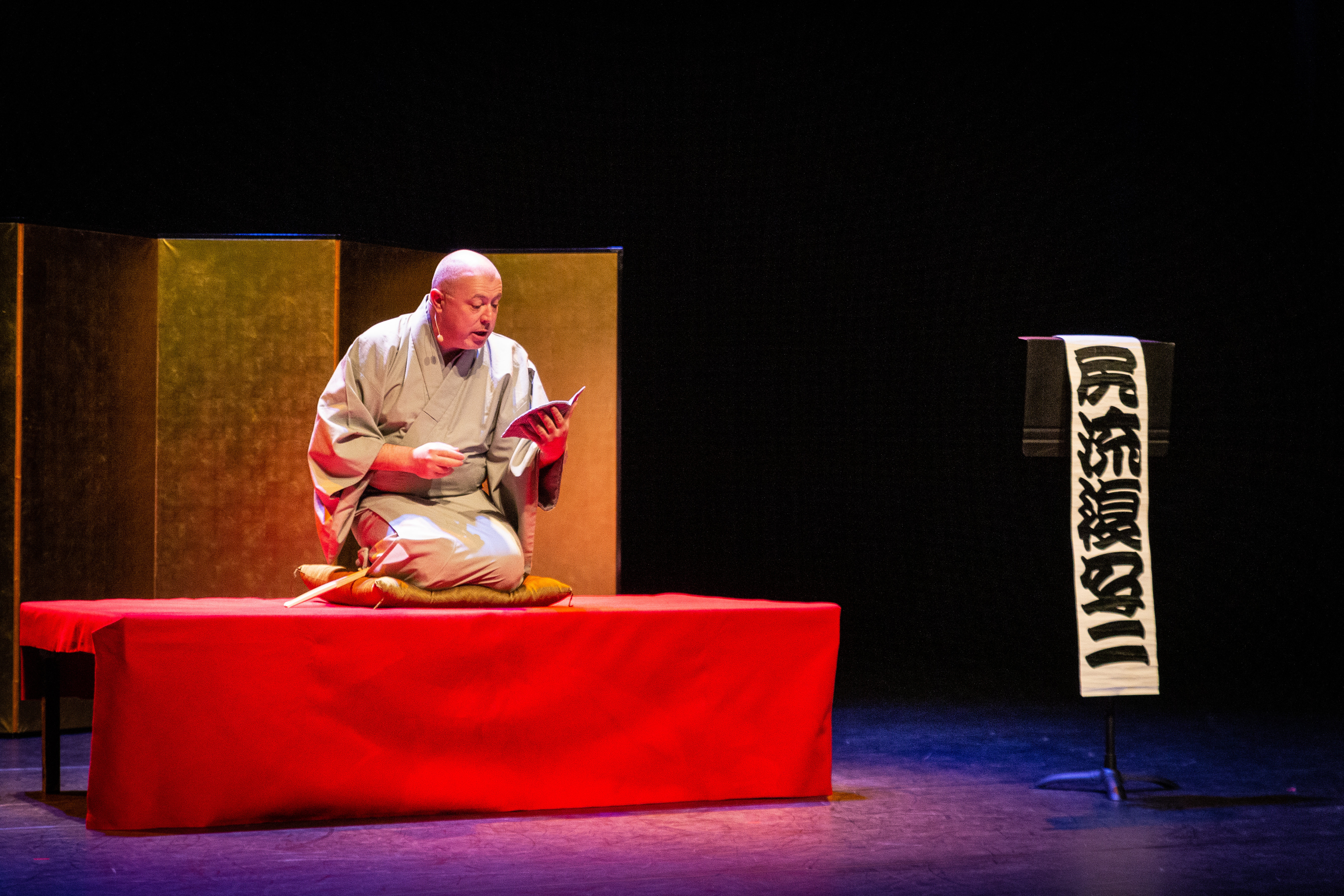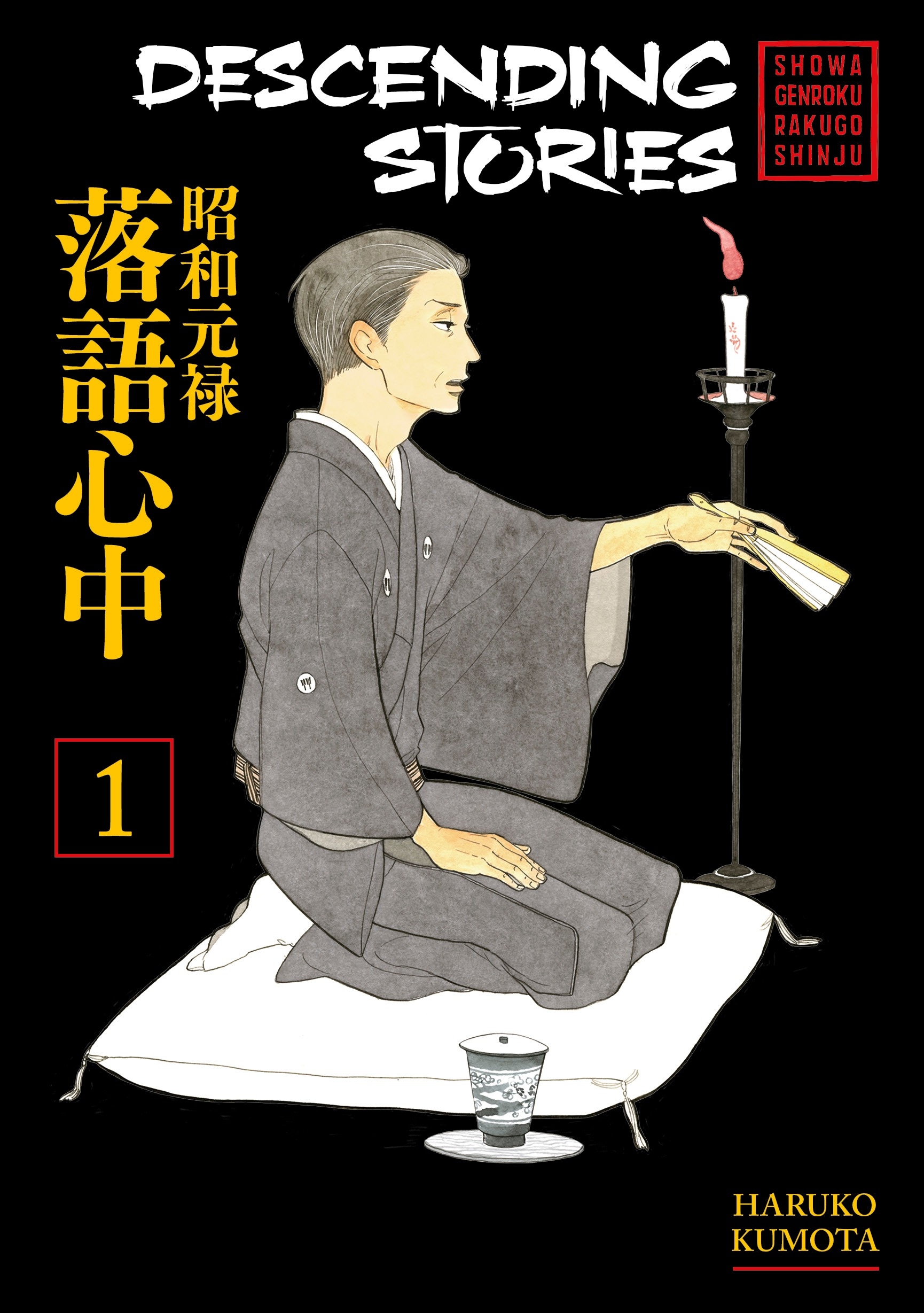The Art of ‘Rakugo’, Sit-Down Comedy
Inherited from tales by Buddhist preachers and now secularised, this solo performance involves a storyteller making the audience laugh.

© Cyril Coppini, French ‘rakugo’ performer - Wikimédia
Rakugo, which literally translates as ‘art of fallen words’, is making a comeback on Japanese stages. Dating back to the 17th century and originating from Buddhist tradition, rakugo experienced its heyday in the Meiji era (1868-1912) and particularly following the Second World War, when it adopted its current form. This also marked the period when it left the streets and private apartments for wood-panelled performance venues, that can still be found in Tokyo and Osaka today.
However, even though rakugo has become secular, the way it is performed still contains the asceticism so dear to religion. The storyteller, rakugoka, alone on the stage known as koza, kneels on a cushion, or zabuton, and does not move from this position throughout their performance. The performance takes place with them dressed simply, in a kimono, and their only props are a paper fan and a cotton towel.
Ascetic staging
With no backdrop and no music, the rakugo artist uses only their facial expressions, changes in intonation and props to bring their humorous stories to life, stories that follow a very specific path: they start with the prologue, in which the storyteller introduces their narrative and tries to arouse their audience’s curiosity.
Then comes the story in itself, which is often includes a dialogue between two characters, both played by the storyteller. Both sides of their face play characters, and their fan is transformed in turn into chopsticks to eat a bowl of noodles, a sabre and a book, while they themselves can simultaneously wear the outfit of a samurai and a subdued merchant, or of a family man and a magical creature. The final stage of the performance is the epilogue. Consisting of an unexpected fall, hence the use of the word rakugo, it often takes the form of a pun intended to win the support of the audience and make them laugh.
Modernisation through the rise of female storytellers
While rakugo continues to preserve classic tales, to adhere as closely to the times as possible, some artists are introducing new stories to attract a new audience. The performance of rakugo has also left performance venues in recent years to appear on television, for example in Shoten, a comedy programme, in dramas like Tigre & Dragon and in mangas like Showa genroku rakugo shingo (translated into English as Descending Stories Showa Genroku Rakugo Shinju).
However, it is not only the scope of rakugo that has been modernised; a revolution is in progress among its members. While the storytellers were initially male only, and would play female characters during their performances, some women have managed to carve out a place for themselves in this male universe. One such example is Niyo Katsura, the figurehead of this generation of female comedians, who was received the annual Young Storyteller Award from the national television channel NHK in November 2021.
The first woman in fifty years to be awarded this prize, she revealed to the daily French newspaper Libération: ‘rakugo wasn’t made for women. It was designed to be performed by men, it’s most often performed by them. (…) But I want us to do away with the notion of women’s rakugo. I don’t perform rakugo like a woman, I do it in the same way as men do, and I think that the idea of a woman performing rakugo isn’t a problem anymore. The fact I won this award proves that.’ It’s a way of attracting a new, younger and, above all, female audience for rakugo.
Descending Stories Showa Genroku Rakugo Shinju (2017), a manga by Haruko Kumota published by Penguin.

© Penguin
TRENDING
-
Hiroshi Nagai's Sun-Drenched Pop Paintings, an Ode to California
Through his colourful pieces, the painter transports viewers to the west coast of America as it was in the 1950s.

-
A Craft Practice Rooted in Okinawa’s Nature and Everyday Landscapes
Ai and Hiroyuki Tokeshi work with Okinawan wood, an exacting material, drawing on a local tradition of woodworking and lacquerware.

-
The Tattoos that Marked the Criminals of the Edo Period
Traditional tattoos were strong signifiers; murderers had head tattoos, while theft might result in an arm tattoo.

-
David Bowie Dressed by Kansai Yamamoto
The English singer was strongly influenced by 'kabuki' theatre and charged the Japanese designer with creating his costumes in the 1970s.

-
‘Seeing People My Age or Younger Succeed Makes Me Uneasy’
In ‘A Non-Conformist’s Guide to Surviving Society’, author Satoshi Ogawa shares his strategies for navigating everyday life.





